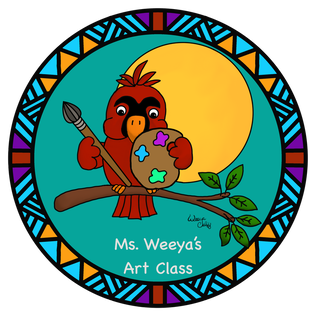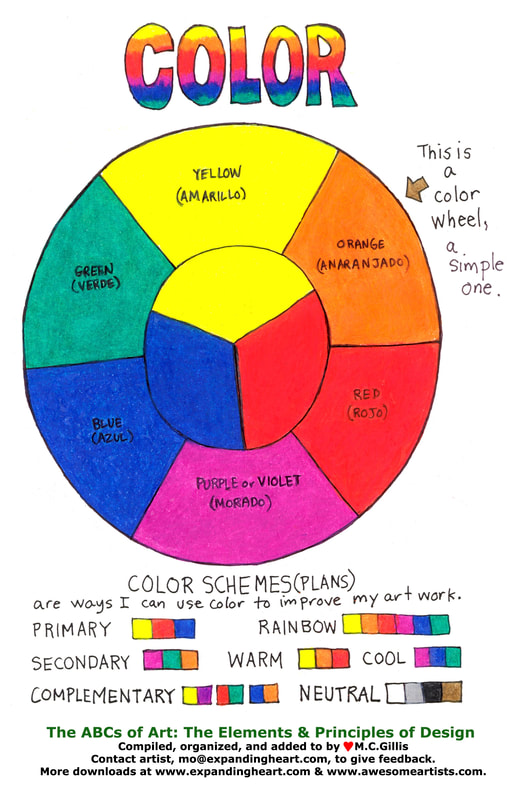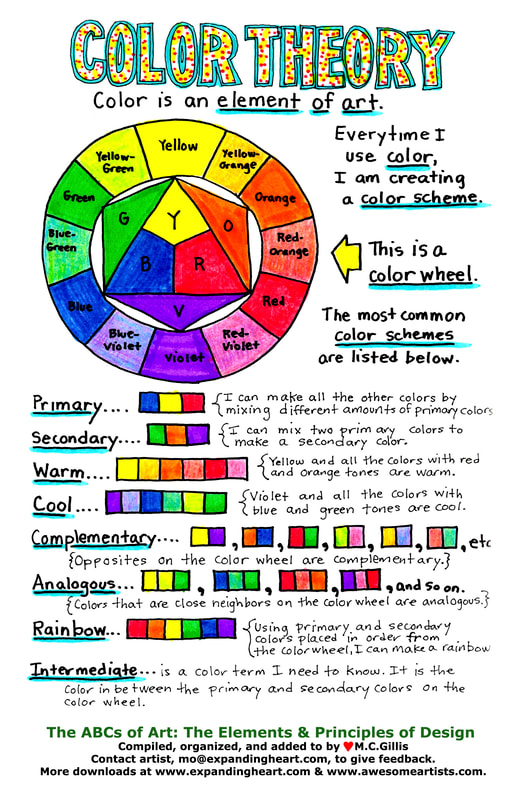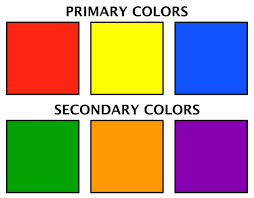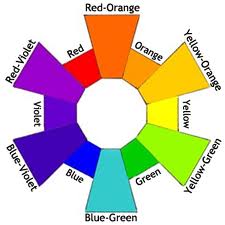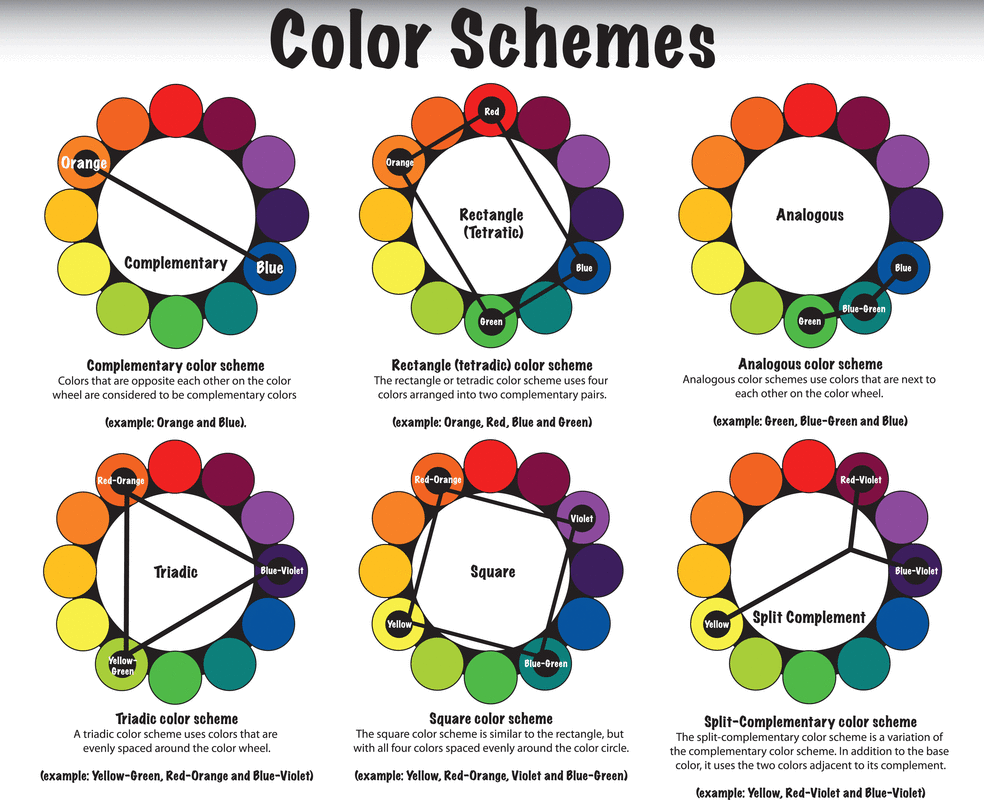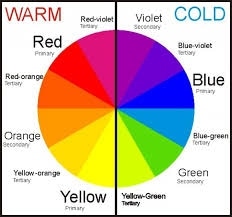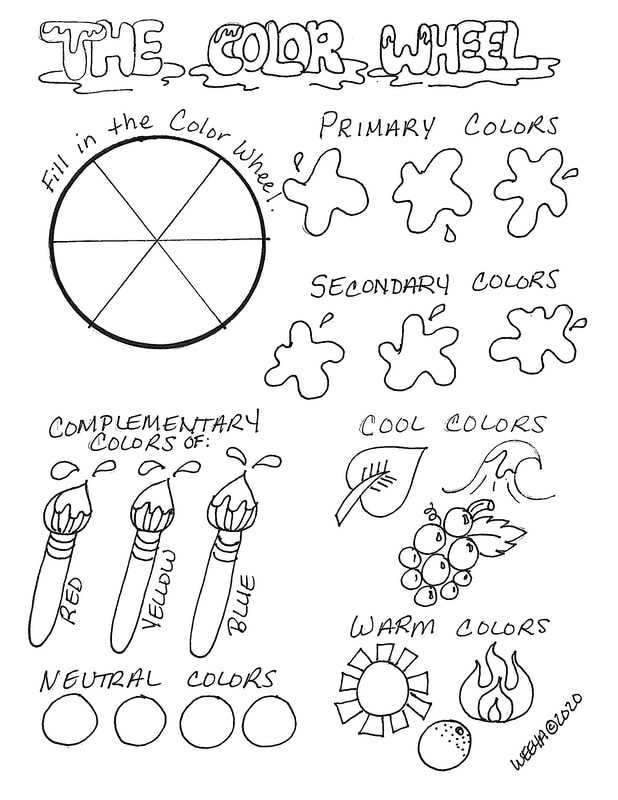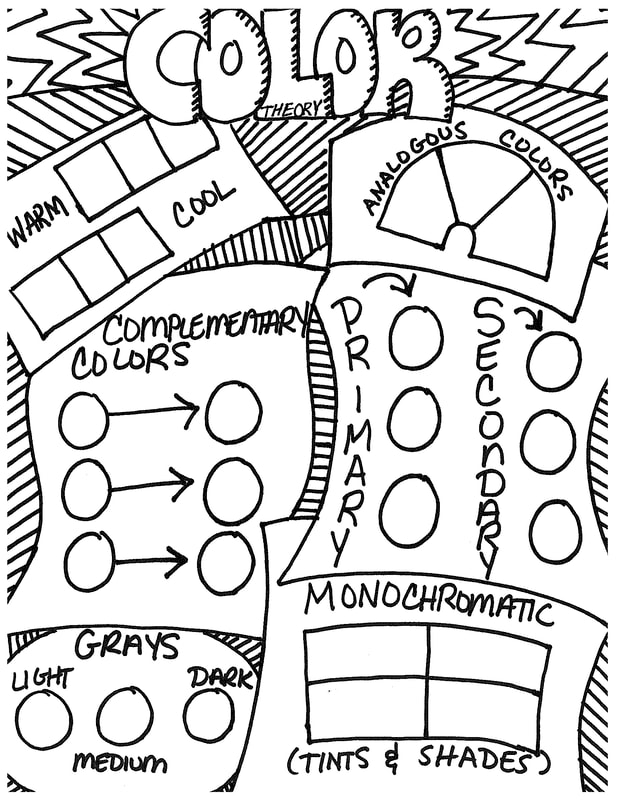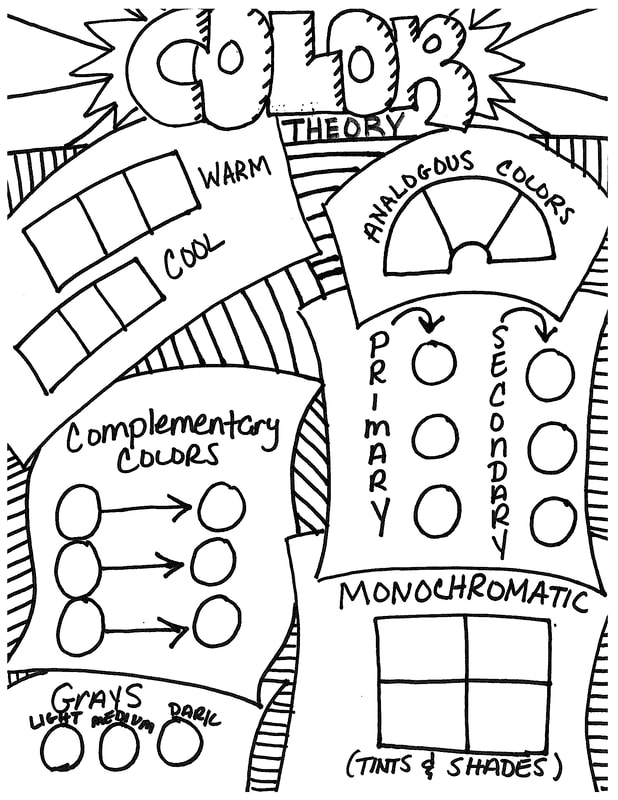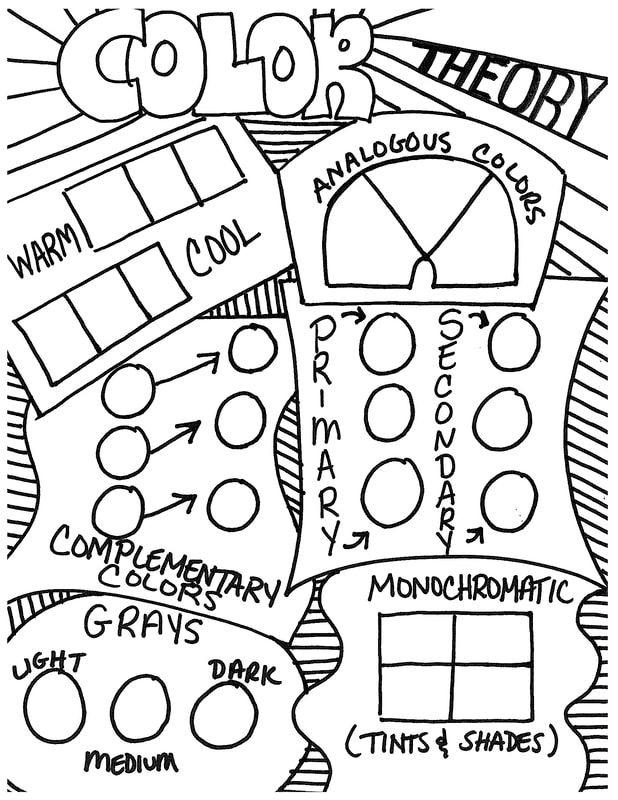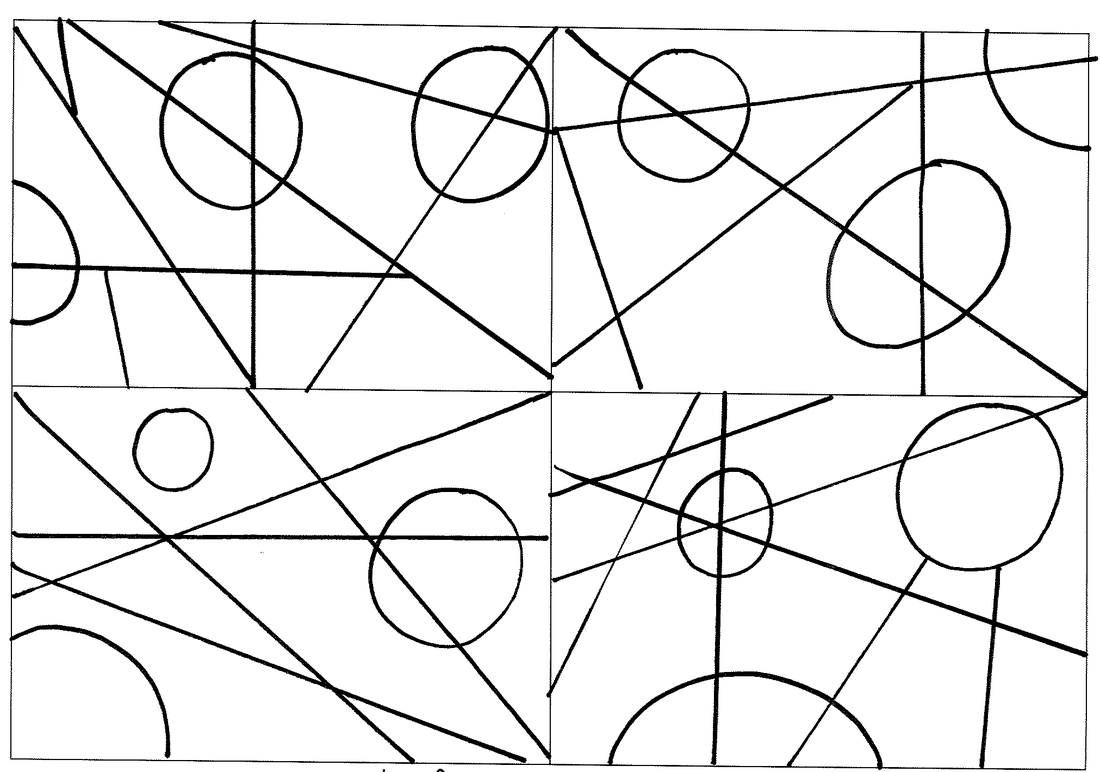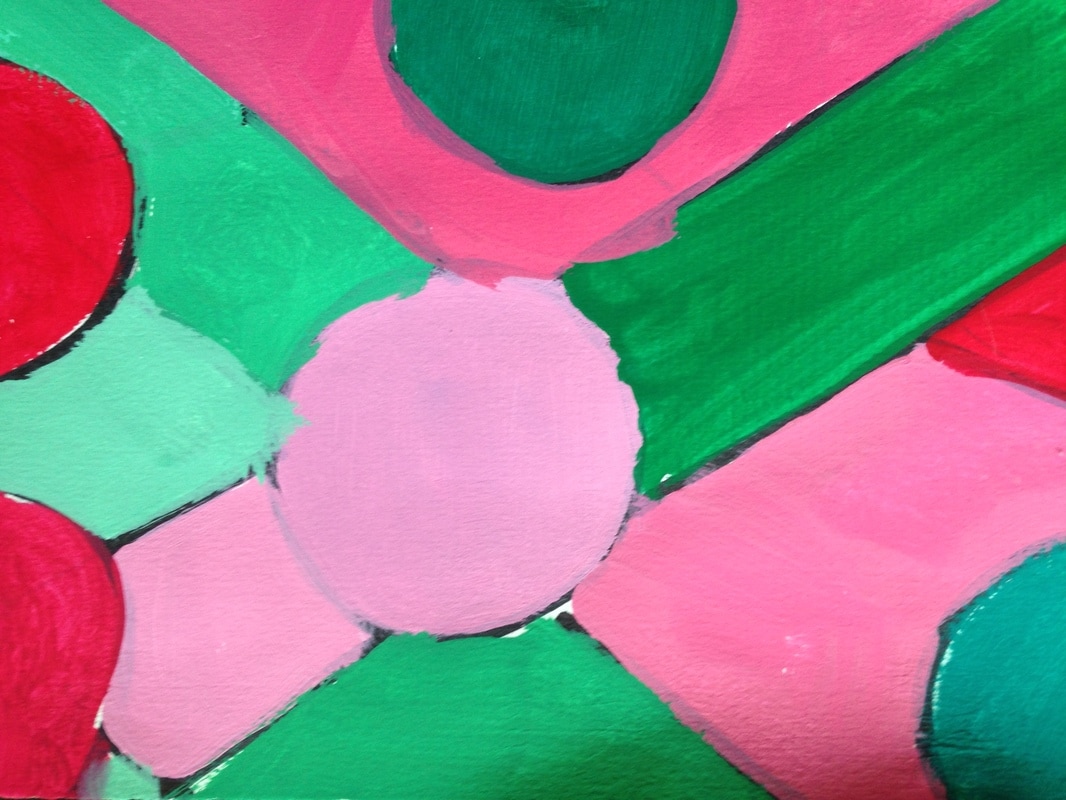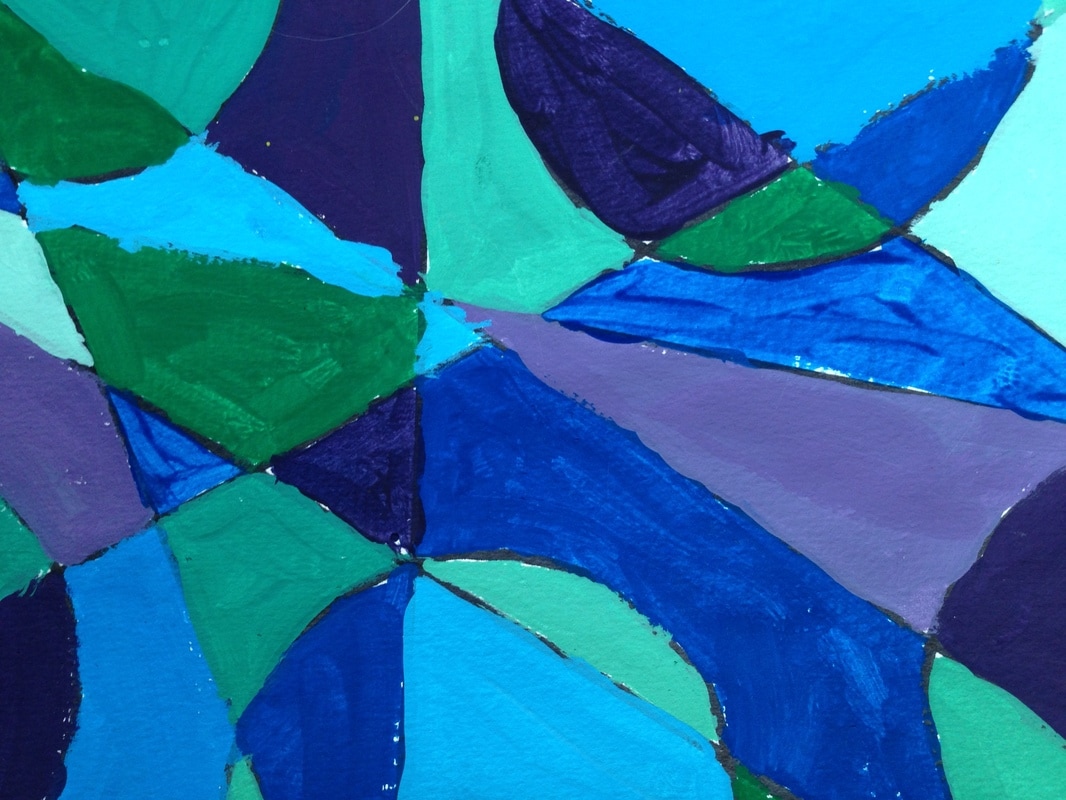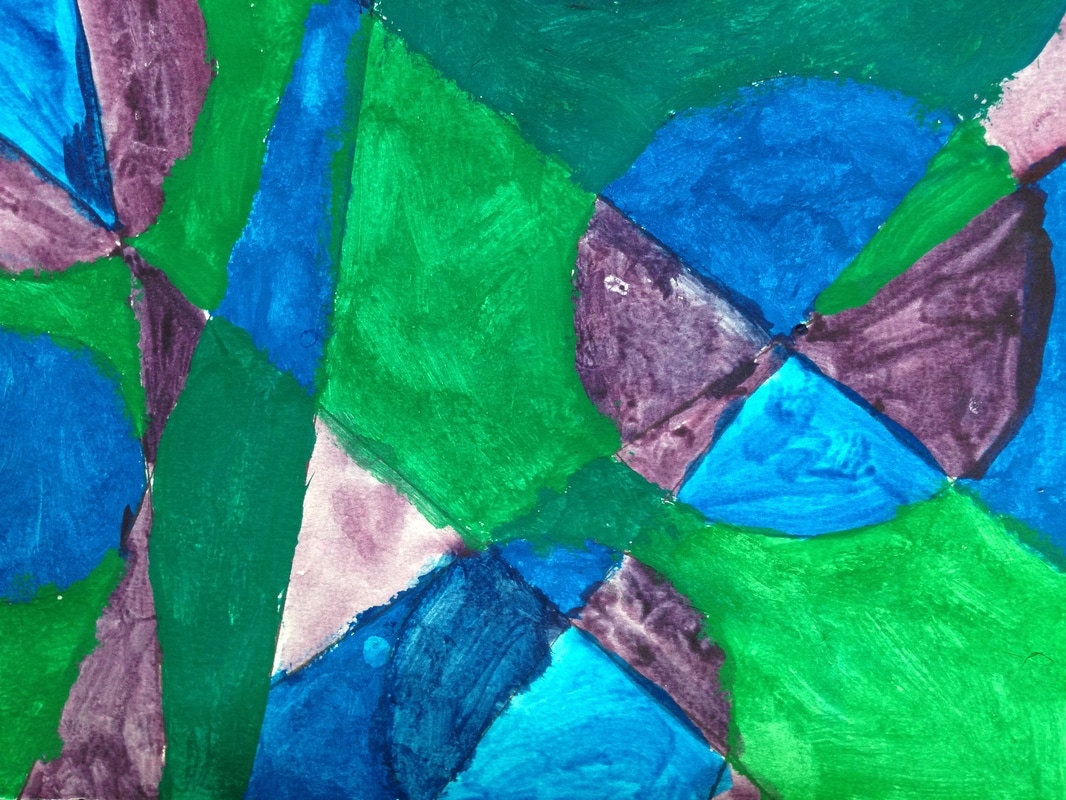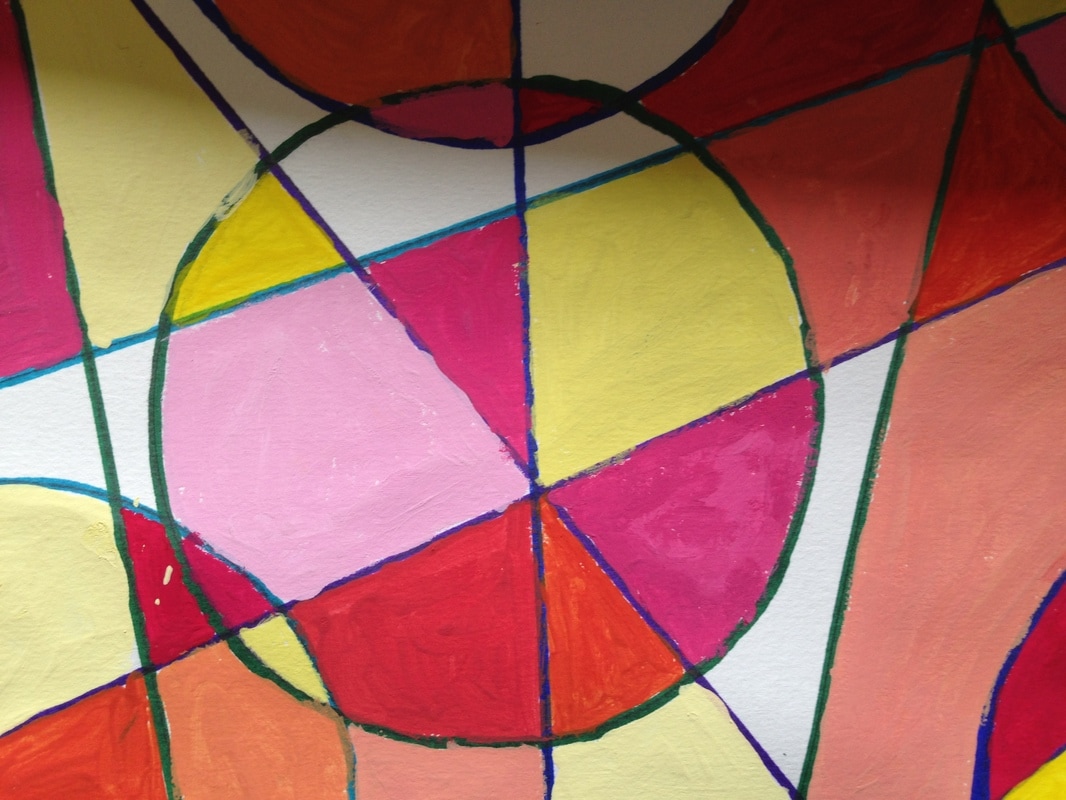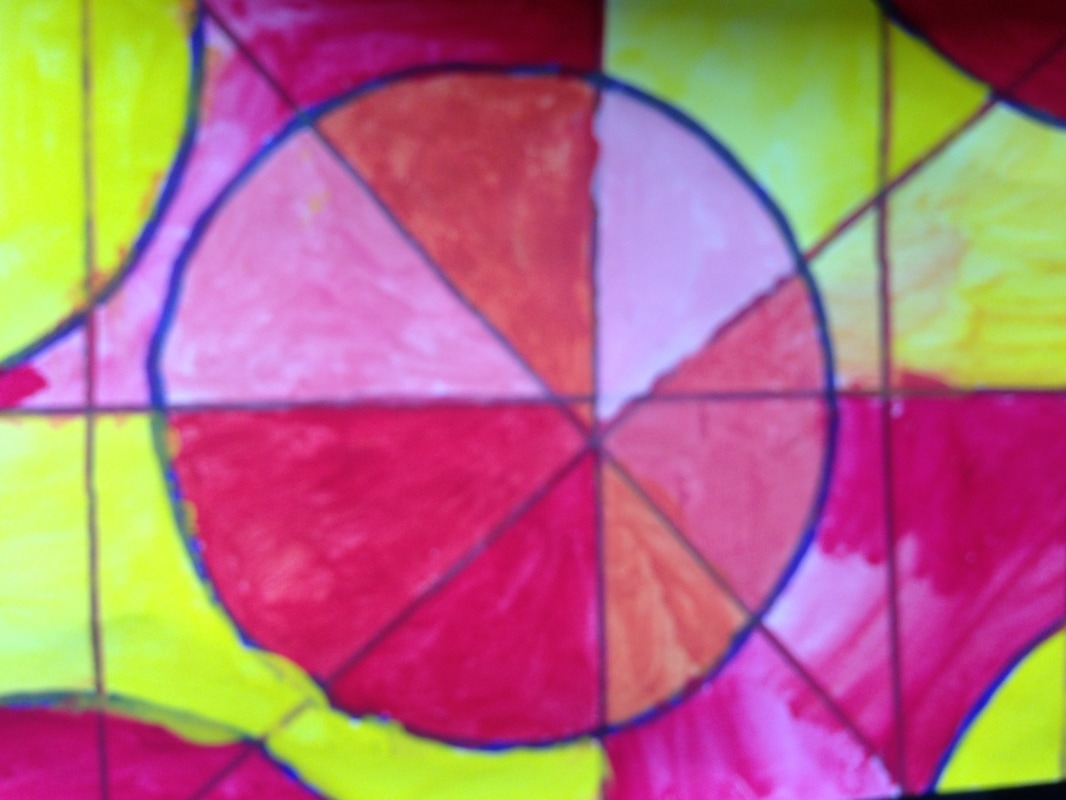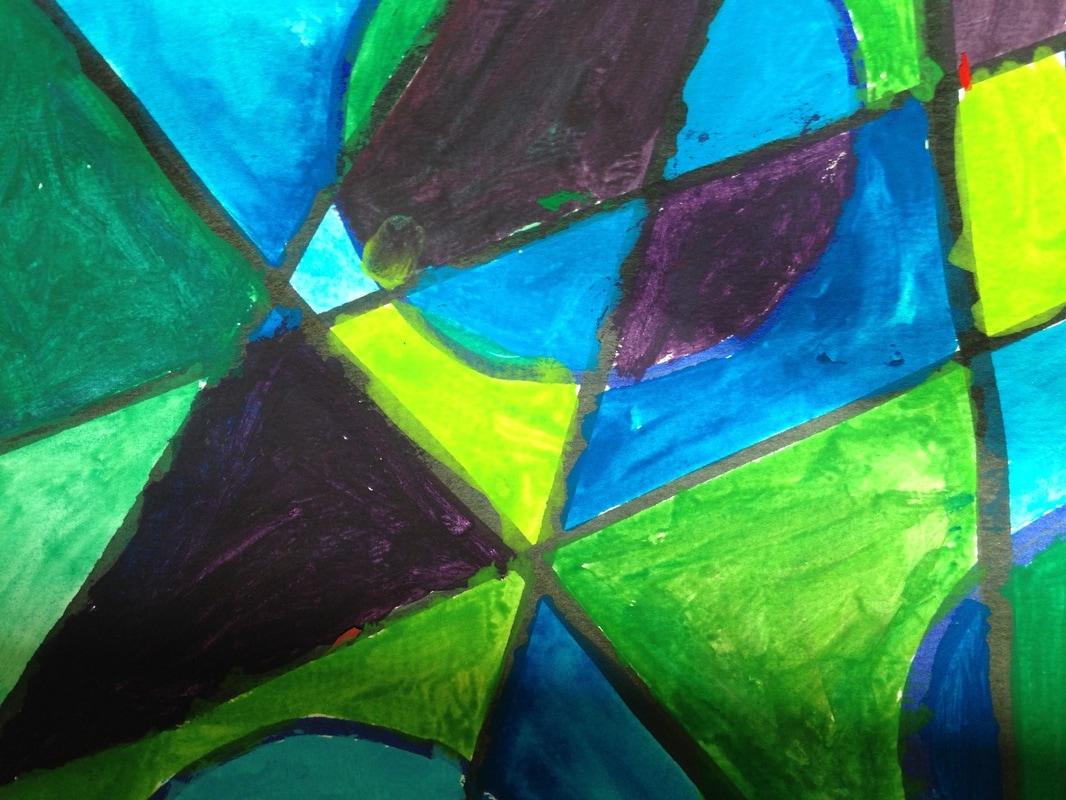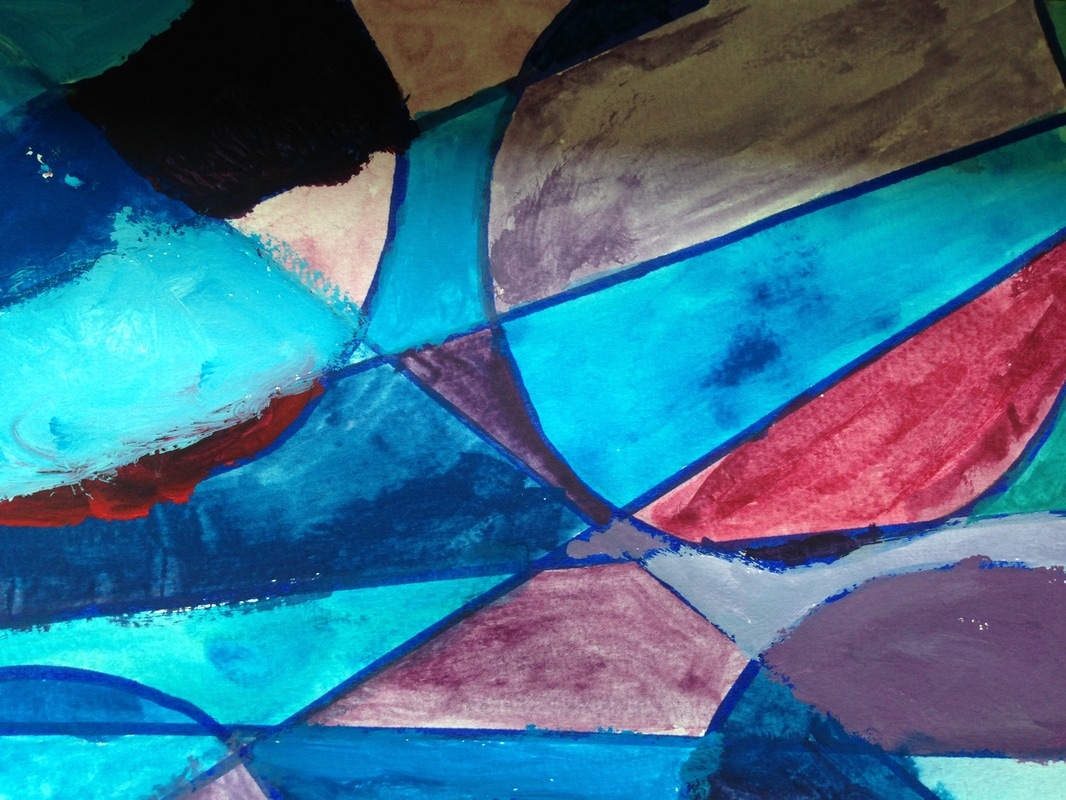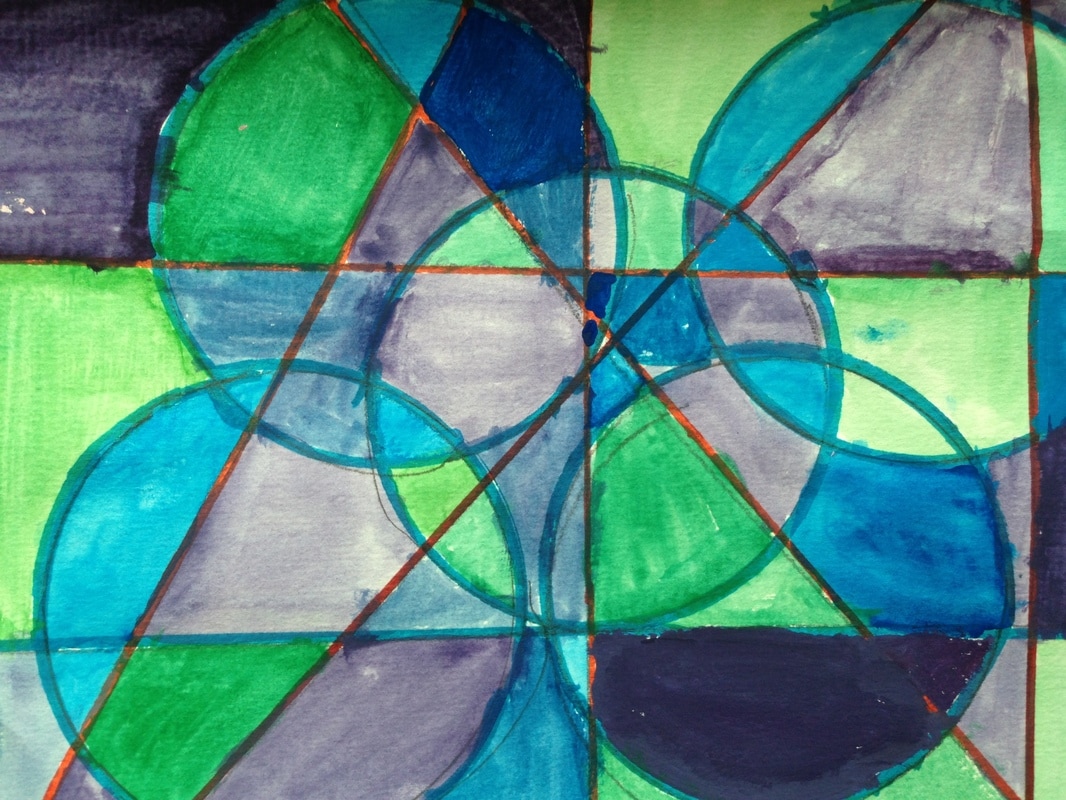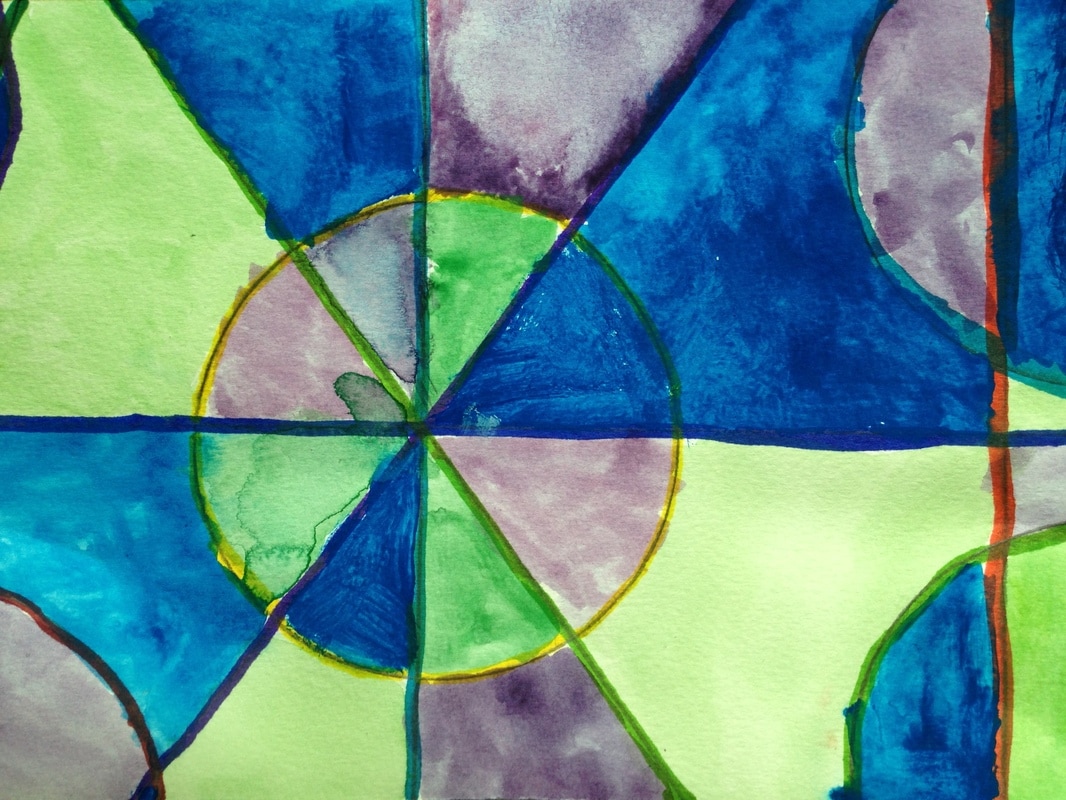COLOR THEORY
Vocabulary:
Color – An element of art that refers to reflected light.
Color wheel – Invented by Sir Isaac Newton, the color wheel represents the color spectrum bent into a circle.
Color – An element of art that refers to reflected light.
Color wheel – Invented by Sir Isaac Newton, the color wheel represents the color spectrum bent into a circle.
Primary colors – The most basic colors: red, blue, and yellow. These colors cannot be produced by mixing but are used to mix all other colors.
Secondary colors – Colors that are made by mixing equal parts of two primary colors. Orange, green, and purple are secondary colors.
Tertiary colors – Colors that are made by mixing equal parts of a primary color and a secondary color. Red-purple, blue-purple, red-orange, yellow-orange, blue-green, and yellow-green are tertiary colors
Tertiary colors – Colors that are made by mixing equal parts of a primary color and a secondary color. Red-purple, blue-purple, red-orange, yellow-orange, blue-green, and yellow-green are tertiary colors
Neutral colors – Black, white, and gray are neutral colors. When these colors with colors on the color wheel they affect the value and intensity of the color.
Color Schemes
Color Schemes
Monochromatic – literally means one (mono) color (chroma). So a monochromatic color scheme is made up of one color and it’s shades and tints.
Complementary Colors – Colors that are positioned directly across from each other on the color wheel. Ex. Blue and orange, red and green, yellow-green and red-purple
Analogous Colors – are colors that are next to each other on the color wheel. Ex. Blue, blue-green, green, and yellow-green; red, red-purple, purple, blue-purple.
Color Triads – consist of three colors found on the color wheel that are equally spaced apart from each other. Ex. Red, blue and yellow or orange, green and purple.
Split-Complementary – a color scheme that is made up of a color and it’s complements closest analogous colors. Ex Blue, yellow-orange and red-orange. Red-orange, red-purple, green
Warm Colors – colors that are usually associated with warm things. Ex. Red, yellow, orange
Cool Colors – colors that are usually associated with cool things. Ex. Blue, purple, green
Assignments
Project 1: Watch the Color Video and answer questions on the handout.
Alternative - Watch slideshow and fill out worksheets along with the slideshow.
Project 2: Using the color scheme/color wheel handout, paint the Color Wheel Painting Worksheet.
Painting instructions...you can only use the primary colors plus black & white.
1. Paint the primary colors.
2. Create and paint the secondary colors.
Red + Yellow = Orange Yellow + Blue = Green Red + Blue = Purple
3. Paint Warm Colors - Red, Orange & Yellow
4. Paint Cool Colors - Green, Blue & Purple
5. Paint Red, Blue & Yellow with their complementary colors next to them.
6. Paint analogous colors.
7. Monochromatic is one color plus black and same color plus white. Paint the monochromatic area.
8. Create a scale of gray. Place a brush tip of black into white, mix = Light gray. Add another dot of black = Medium gray. Add another dot of black = Dark grey.
PRINT- Color Theory Paint Sheets / PRINT - The Color Wheel Worksheet
Project 1: Watch the Color Video and answer questions on the handout.
Alternative - Watch slideshow and fill out worksheets along with the slideshow.
Project 2: Using the color scheme/color wheel handout, paint the Color Wheel Painting Worksheet.
Painting instructions...you can only use the primary colors plus black & white.
1. Paint the primary colors.
2. Create and paint the secondary colors.
Red + Yellow = Orange Yellow + Blue = Green Red + Blue = Purple
3. Paint Warm Colors - Red, Orange & Yellow
4. Paint Cool Colors - Green, Blue & Purple
5. Paint Red, Blue & Yellow with their complementary colors next to them.
6. Paint analogous colors.
7. Monochromatic is one color plus black and same color plus white. Paint the monochromatic area.
8. Create a scale of gray. Place a brush tip of black into white, mix = Light gray. Add another dot of black = Medium gray. Add another dot of black = Dark grey.
PRINT- Color Theory Paint Sheets / PRINT - The Color Wheel Worksheet
Final Project 3: Choose a Color Scheme (listed below). On 8.5 x 11 piece of painting paper draw an abstract design using 7 straight lines and 3 to 5 circles. Lines and circles can overlap to create a unique look. Paint the design using the Color Scheme chosen.
Schemes - Monochromatic, Complementary, Warm or Cool Colors.
See examples:
Schemes - Monochromatic, Complementary, Warm or Cool Colors.
See examples:
Once you have created your abstract design with lines and circles, trace it with a black sharpie. Erase all pencil marks. Now paint using the Scheme you have chosen.
See student examples:
See student examples:
This completes the Color Theory Unit.
